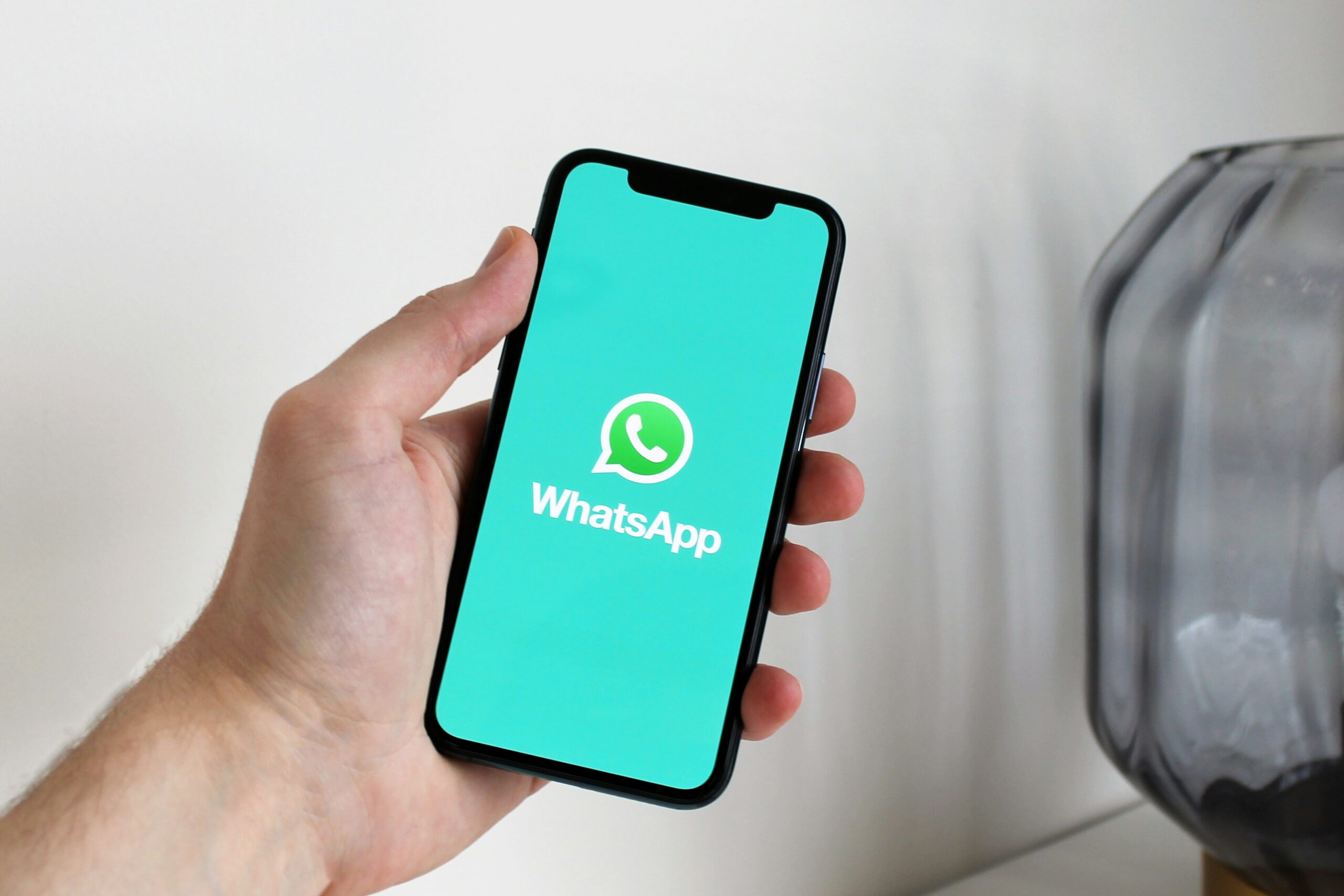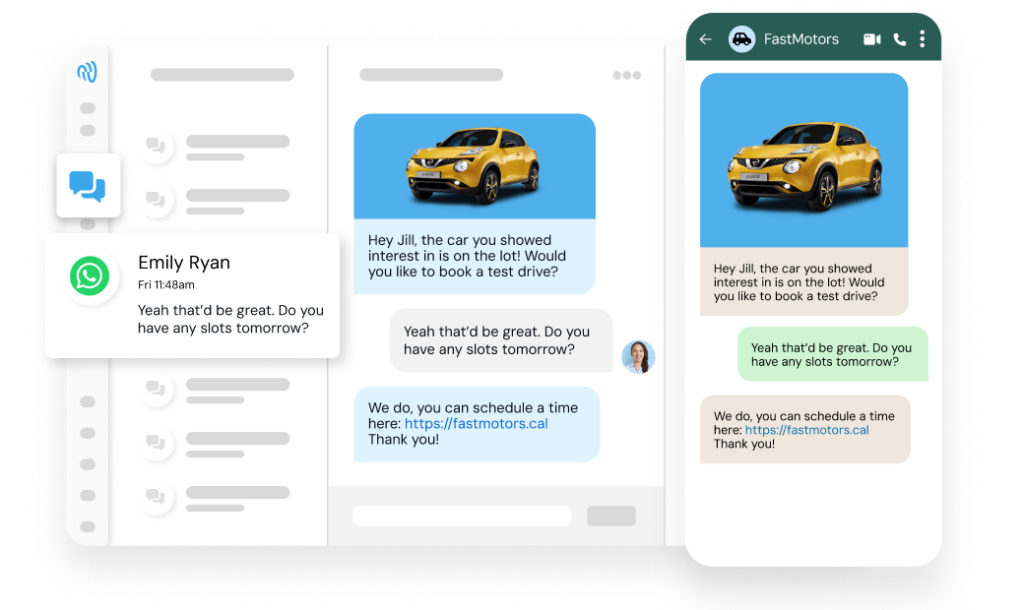Share article:
WhatsApp marketing in Australia: A complete guide for businesses

If you think WhatsApp is just for group chats and family updates, think again.
With around 13 million Australians using the app every month, it’s quickly becoming one of the most powerful communication channels for businesses too (which is very important news with BFCM just around the corner).
From small retailers to national brands, Australian businesses are waking up to the fact that their customers don’t just check WhatsApp, they basically live in it. And that’s where the real opportunity lies.
In this guide, we’ll break down everything you need to know about WhatsApp marketing in Australia, including what it is, how it compares to SMS, and the simple steps to start using it ASAP in a legally compliant, customer-centric way.
What is WhatsApp marketing?
WhatsApp marketing involves using WhatsApp to talk to your customers. You can use it to sell, but it’s also a great way to connect with your audience on a platform they’re already heavily using.
To send marketing messages via WhatsApp, you need to have WhatsApp for business. There are two versions of this, and which one you use depends on your business size and setup.
- WhatsApp Business App. This one’s free and designed for small businesses. You can set up a profile, create quick replies, and send one-to-one messages.
- WhatsApp Business Platform (API). This is the more advanced option, which is made for businesses that want to send a lot of messages or automate parts of their customer comms. It plugs into your CRM or messaging platform.
While there are many different ways you can incorporate WhatsApp into your marketing strategy, there are three core message types that WhatsApp supports:
- Promotional messages, like time-sensitive offers, sales, product drops, and general marketing comms.
- Transactional messages, like order confirmations, delivery updates, or appointment reminders.
- Service messages, where you can chat with customers directly to answer questions or sort out issues.
WhatsApp has rules and templates for each message type, so you just have to make sure you’re compliant before you send them.
The ultimate rule to follow: you can’t just message people out of the blue. Before you send anything, you need a clear opt-in from the customer (e.g. via a checkbox on your website or a QR code they can scan to subscribe). You’ll also need to use approved message templates for that first bit of outreach, but once someone replies you’re free to chat naturally.
Is WhatsApp marketing legal in Australia?
Short answer: yes – if you do it properly.
Just like email and SMS marketing, WhatsApp message fall under Australia’s Spam Act 2003, which means you need to tick three simple boxes before hitting send:
- Get consent (your customer has to say a solid “yes” to hearing from you)
- Clearly identify yourself (your customer should always know who’s messaging them)
- Include a way to opt out (and make it really easy for customers to do so)
Basically, the same rules that apply to any other kind of direct marketing also apply here. You can read more on what counts as consent in our recent guide to navigating ACMA rules and also ACMA’s official guidance.
On top of this, WhatsApp has its own set of rules through Meta’s Business Policy, which says you have to:
- Use approved message templates for any outreach you initiate.
- Keep proof of opt-in, showing that each customer actively agreed to receive messages.
Can I send bulk WhatsApp messages in Australia?
Yes, but only to people who’ve opted in. You can’t buy a list or message random numbers. Bulk campaigns must go through an official WhatsApp Business Solution Provider (like Sinch MessageMedia), which makes sure your templates and targeting meet Meta’s rules.

Do I need to register anything with ACMA or Meta?
Not with ACMA, but Meta does need businesses to verify their identity and phone number before using the WhatsApp Business Platform. Your BSP (that’s us!) will guide you through that process.
How do opt-outs work on WhatsApp?
Customers can type something like “STOP” to unsubscribe, and you’re required to remove them from your list. (Tip: Sinch MessageMedia makes this automatic so you stay compliant without needing to figure it all out yourself).
WhatsApp marketing examples in Australia
What does WhatsApp marketing actually look like down under? Below are examples (and inspiration) across verticals. Some are Aussie-based, others are global examples that Australian brands could mimic (or already are).
Melia Hotels International: reservations and confirmation messages
Hospitality brands like Melia Hotels International are using WhatsApp to handle reservations, send confirmation messages, offer concierge services, and let guests request services via chat.
If you’re an Aussie hotel, you can replicate this by sending check-in instructions, upselling spa services, or allowing room service orders via WhatsApp.
Bank BRI: personal assistant
Another example is Bank BRI who uses WhatsApp to run SABRINA, its virtual personal assistant that customers can get real-time support from.
Benefits of WhatsApp marketing if there’s already SMS?
If your business already uses SMS, you might be wondering do we really need WhatsApp too? Fair question. SMS is tried and true: it’s instant, it’s universal, and it works. But WhatsApp brings a whole new layer of interaction that makes customer communication way more conversational.
Here’s what makes it worth adding to the mix:
1. Ridiculously high engagement
Open rates often hover around 98%, and most people check them within minutes. That’s higher than both email and SMS in many cases, simply because WhatsApp is where people live. It’s the same app they use to message friends, plan dinners, and share memes.
2. Rich media that brings conversations to life
You can send photos, videos, PDFs, links, even product catalogues, which means you can show rather than tell (think product demos, menu previews, appointment confirmations with attached details, or event reminders with a location pin).
3. Real two-way conversations
Customers can reply instantly, ask questions, or confirm details right inside the same chat. That makes it perfect for support teams, sales follow-ups, or post-purchase check-ins.
4. Familiar, low-barrier channel
Australians already use WhatsApp in a big way (around 13 million of us, according to recent reports). That makes it easy for customers to engage because there’s no new app to download and they’re already familiar with the interface.
5. Cost-effective and scalable
WhatsApp can help take pressure off call centres and avoid expensive manual follow-ups. Automating easy-to-answer questions, like “What’s my delivery status?” or “Can I reschedule my appointment?”, saves time for both your team and your customers. It also blends nicely with your existing SMS strategy, so you can use each channel where it performs best.
You don’t need to ditch SMS, but pairing it with WhatsApp gives you more flexibility, richer interactions, and a better customer experience.
How to get started with WhatsApp Business messaging in Australia
Ready to start using WhatsApp to connect with customers? Here’s how to get set up properly (and stay on Meta’s good side while you’re at it).
- Verify your Business Manager and phone number. Go to business.facebook.com and create or log into your account. Add your business details and verify your business name, address, and website.
- Choose a WhatsApp Business Solution Provider (BSP), a.k.a. a trusted partner that connects your business to WhatsApp’s infrastructure. Providers like Sinch MessageMedia make setup simple and handle the technical side for you.
- Create and submit message templates for approval.
- Collect user content before messaging, either through your website, checkout process, or another clear consent form.
- Integrate WhatsApp with your CRM or SMS platform, so you can manage all customer interactions in one place.
- Track and optimise performance. Monitor open rates, reply rates, and link clicks to see what’s working.
How much does WhatsApp marketing cost in Australia?
Good question, and one that doesn’t have a one-size-fits-all answer. WhatsApp Business pricing used to be based on conversations, not individual messages, but that all changed in July 2025.
Now, it’s done on a per-message model where each template message is charged individually. Only utility templates are free when they’re sent within the 24-hour customer service window.
WhatsApp marketing pricing per message in Australia varies slightly depending on your provider (for example, Sinch MessageMedia vs other BSPs) and the destination country. For example, WhatsApp’s pricing calculator says to send a message to a customer in Australia costs $0.0952 per message (customers never pay to receive your messages – it all runs over their data or Wi-Fi connection, not through their telco).
For the most accurate numbers, check the WhatsApp API cost in Australia 2025 with your provider. Sinch MessageMedia offers transparent local rates, so you’ll always know what you’re paying before you send.
Start a free trial or book a demo to see how it works.
Best practices for WhatsApp Marketing in Australia
Once you’re set up and ready to send, the key to great WhatsApp marketing is simple: keep it human. The best-performing WhatsApp campaigns should feel like actual, real conversations.
Here’s how to make sure your messages land well.
Personalise every message
Use your customer’s first name, reference their last order, or tailor your message to what they’ve interacted with before. A quick “Hey Sarah, your order’s on the way” will always outperform a generic “Your order has shipped.”
Use approved message templates
You need to use Meta-approved templates if you’re sending outbound messages, but that doesn’t mean they have to sound robotic. Write like a human, and keep it friendly and clear. For example, instead of saying “your appointment has been confirmed”, try “looking forward to seeing your tomorrow at 3pm.”
Always include a clear opt-out
Compliance isn’t optional for legal reasons, but following the rules also makes for a good customer experience. Always give people a quick way to unsubscribe, like “Type STOP to opt out.” It shows respect for their inbox and keeps you in line with the Spam Act 2003.
Respect business hours and don’t overdo it
Over-messaging can feel intrusive and, let’s face it, can come across as desperate and annoying. Avoid this by limiting how often you send messages and stick to AEST business hours unless it’s really, truly time-sensitive.
Blend it into your existing strategy
WhatsApp shouldn’t replace SMS or email, but it can definitely strengthen your message when you intentionally use it in your existing flows.
For example, you might use it to send appointment reminders with easy reschedule links, order updates with real-time delivery info, or event invites with location pins and calendar links.
Grow your business with Sinch MessageMedia, a trusted Australia WhatsApp marketing platform
If you’re ready to add WhatsApp to your marketing mix, Sinch MessageMedia is on hand to help.
There’s a reason (well, many reasons) that thousands of Australian businesses choose us as their BSP:
- Local support when you need it. Our Australian team is online during AEST business hours, so you’re never left waiting for help across time zones.
- Transparent pricing and real delivery metrics. Know exactly what you’re paying for, and track message performance with clear, easy-to-read analytics.
- Proven experience, trusted by top brands. With decades of experience in business messaging, we’ve helped everyone from small retailers to enterprise organisations deliver messages that get results.
- Enterprise-grade security and data protection. Sinch MessageMedia is ISO-27001 certified, and all data is hosted locally for Australian data residency.
- Plug-and-play integrations. Connect Sinch MessageMedia with tools you already use, including Shopify, HubSpot, Salesforce, and Zapier, to automate customer journeys and save hours of manual work.
- One powerful, omnichannel platform. Manage your WhatsApp, SMS, and MMS conversations from one place. Send updates, automate workflows, and measure performance all in a single, user-friendly dashboard.
Book a demo to see how it works or start a free trial and start connecting with your customers today.
